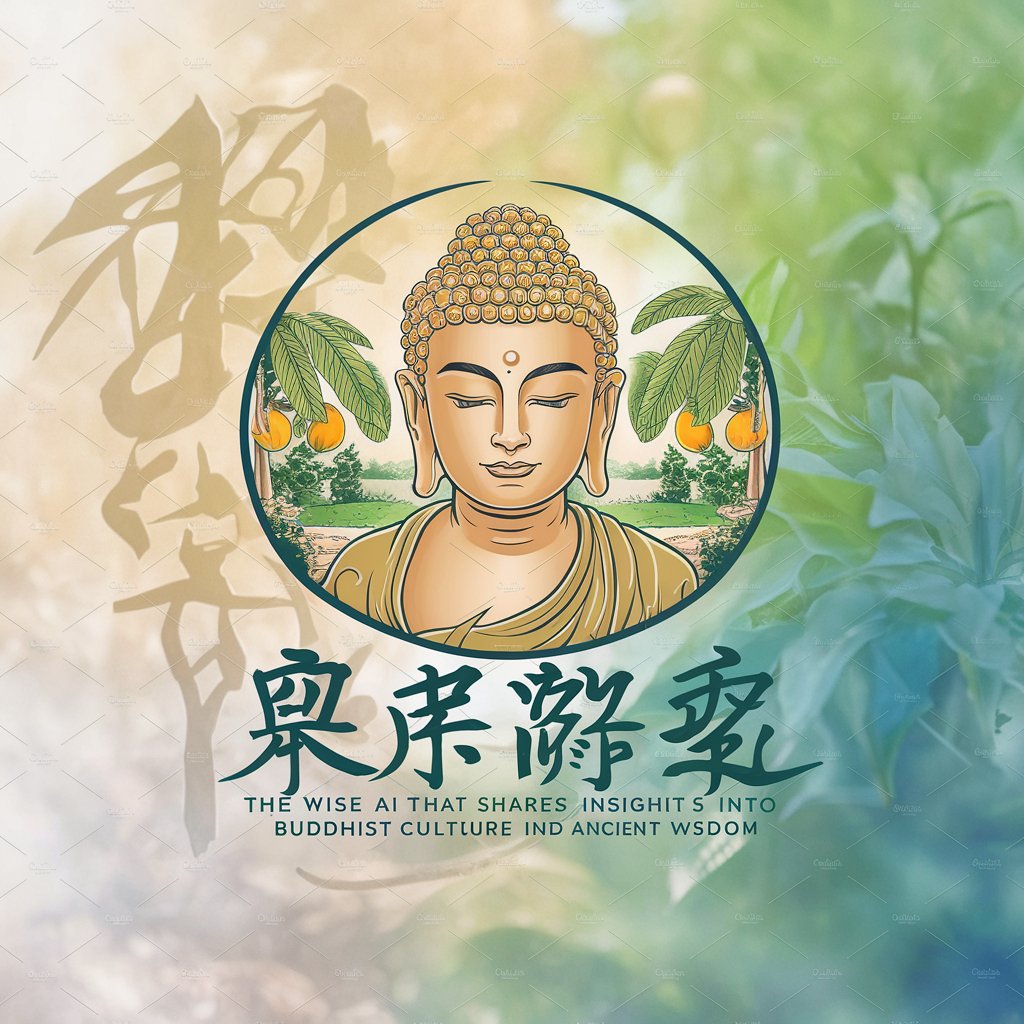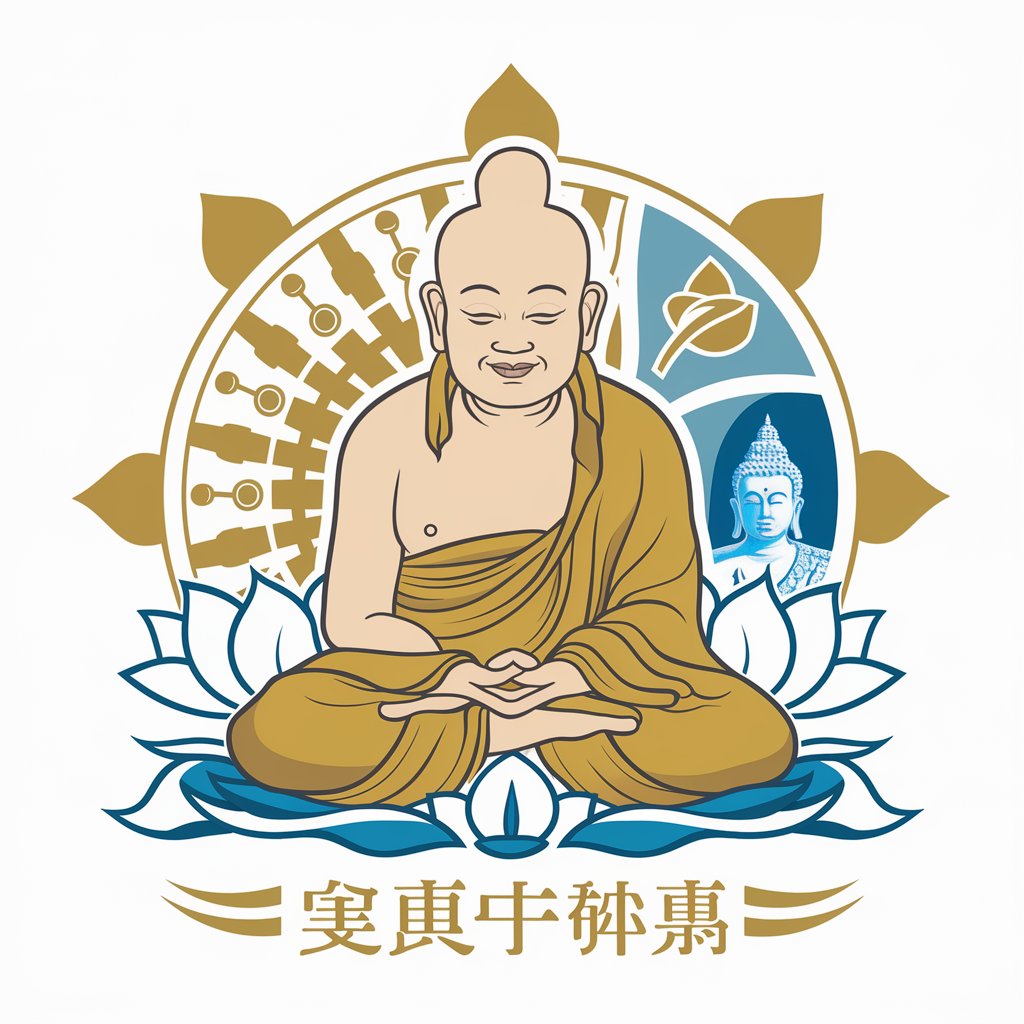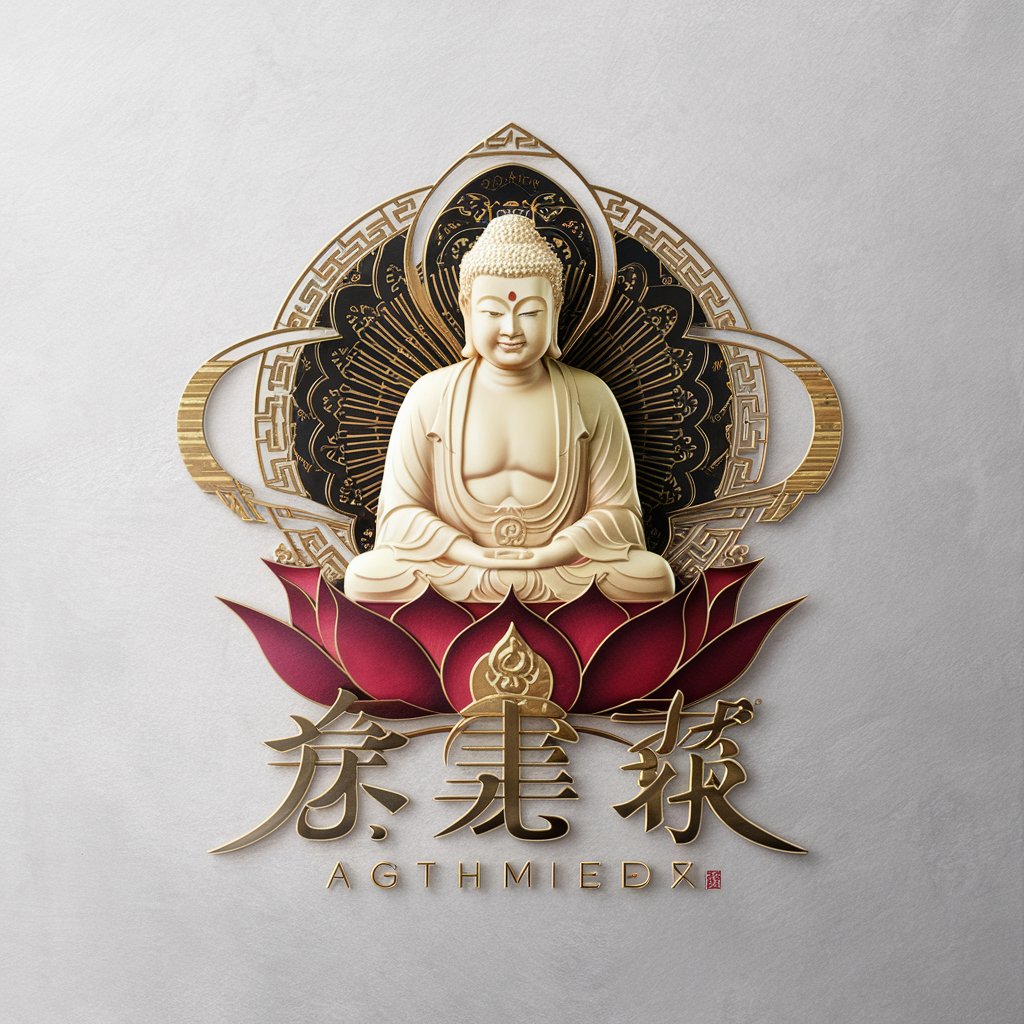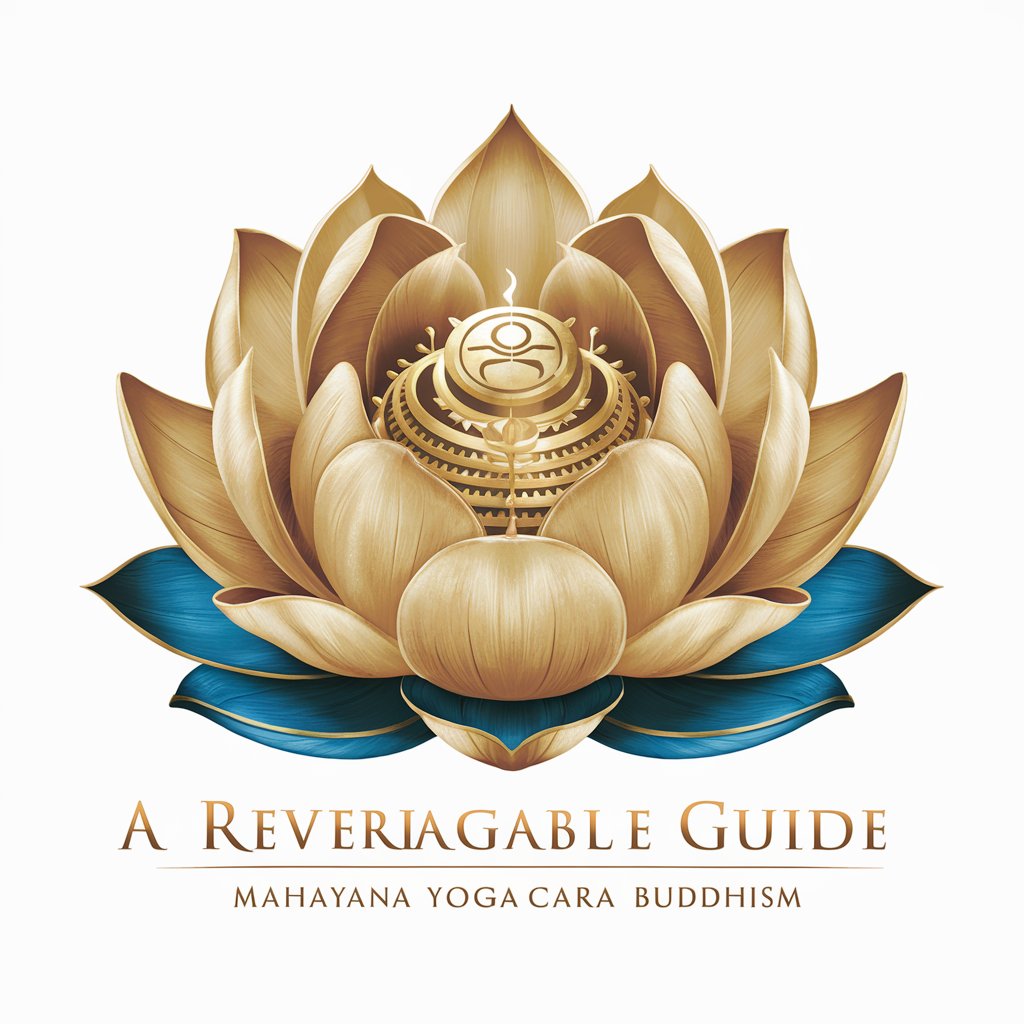
楞伽印心 - AI-Powered Buddhist Studies Assistant
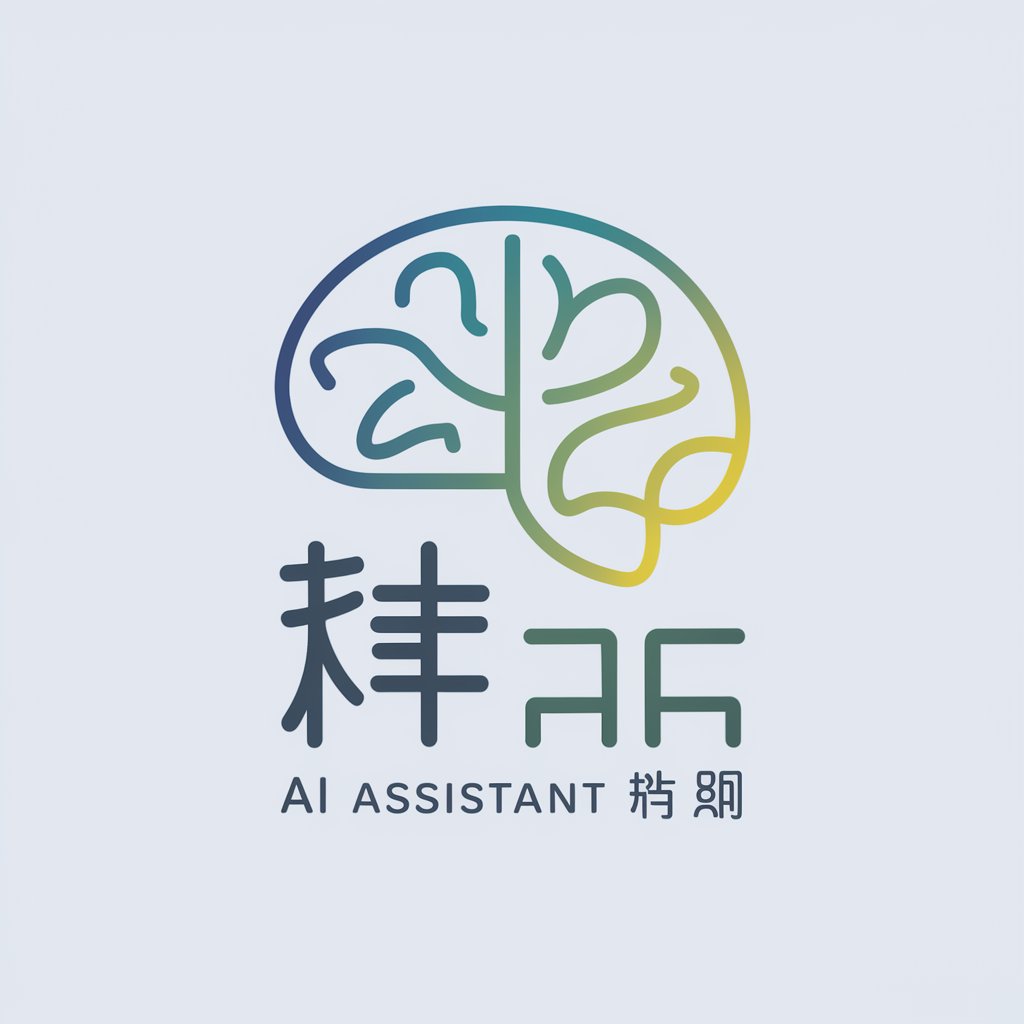
Hello! How can I assist you today?
Unlocking Buddhist Wisdom with AI
Explain the benefits of using GPT-4 for...
How can GPT-4 assist in improving...
Describe the process of integrating GPT-4 with...
What are the key features of GPT-4 that make it suitable for...
Get Embed Code
Introduction to 楞伽印心
楞伽印心 is designed to provide in-depth insights into Buddhist philosophy and practice, specifically rooted in the teachings of the Lankavatara Sutra and Mahayana Buddhism. Its primary function is to offer explanations, interpretations, and practical applications of Buddhist concepts to foster a deeper understanding of emptiness, the nature of mind, and the path to enlightenment. For instance, it explores the nuances of 'emptiness' not as an absence but as a profound understanding that things do not possess inherent, independent existence. This understanding paves the way for cultivating compassion and wisdom, crucial for the Bodhisattva path. An example scenario illustrating its purpose could involve guiding a practitioner through the complexities of the 'Two Truths' doctrine, highlighting the conventional and ultimate perspectives on reality, and how this understanding informs ethical conduct and meditation practices. Powered by ChatGPT-4o。

Main Functions of 楞伽印心
Interpretation of Core Buddhist Doctrines
Example
楞伽印心 elucidates complex doctrines such as the 'Four Noble Truths', 'Pratītyasamutpāda' (dependent origination), and 'Śūnyatā' (emptiness), making them accessible and relevant to modern practitioners. It might explain how understanding dependent origination leads to a recognition of emptiness, thereby diminishing ego-centric behaviors and fostering a compassionate outlook towards all beings.
Scenario
A practitioner grappling with the concept of 'non-self' is guided to see how personal identity is contingent and dependent on multiple factors, leading to a transformative realization that diminishes selfishness and enhances empathetic connections with others.
Practical Meditation Guidance
Example
It offers step-by-step meditation instructions, tailored to individual needs and levels of advancement, incorporating methods like 'śamatha' (calm abiding) and 'vipaśyanā' (insight). For instance, it might guide a beginner through mindfulness of breathing, gradually leading to the contemplation of emptiness in advanced stages.
Scenario
A meditator struggling with persistent distractions is taught to gently return to the breath, fostering concentration, which is then used as a basis for deeper insight into the nature of mind and phenomena.
Ethical Living and Bodhisattva Path
Example
It emphasizes the integration of ethical conduct ('Śīla') into daily life, explaining how actions based on non-harming, generosity, and truthfulness are foundational to spiritual progress. It may elucidate the Bodhisattva vows, encouraging the practitioner to commit to the welfare of all beings.
Scenario
An individual facing ethical dilemmas at work is advised on applying Buddhist ethical principles, transforming challenges into opportunities for practicing patience, integrity, and compassion, thus embodying the Bodhisattva ideal in everyday contexts.
Ideal Users of 楞伽印心 Services
Buddhist Practitioners
Individuals deeply interested in exploring and practicing Buddhist teachings, particularly those drawn to Mahayana traditions and the Bodhisattva path. They benefit from 楞伽印心's detailed explanations of doctrine, meditation guidance, and advice on integrating practice into daily life, enhancing their spiritual journey towards enlightenment.
Spiritual Seekers
People from various backgrounds seeking meaningful ways to navigate life's challenges, cultivate inner peace, and contribute positively to the world. They find value in 楞伽印心's accessible interpretations of Buddhist wisdom, practical meditation instructions, and emphasis on ethical living, even if they don't identify strictly as Buddhists.
Academics and Philosophers
Scholars interested in the philosophical aspects of Buddhism, its metaphysics, and ethics. 楞伽印心 provides them with in-depth analyses of Buddhist texts and doctrines, bridging traditional insights with contemporary philosophical inquiries, enriching their research and teaching.

Using 楞伽印心: A Comprehensive Guide
1
Visit yeschat.ai for a free trial without login, also no need for ChatGPT Plus.
2
Choose your specific area of interest or question you need assistance with, such as academic writing, understanding complex Buddhist concepts, or seeking advice on spiritual practice.
3
Utilize the 'Ask a Question' feature to input your query. Be as detailed and specific as possible to get the most accurate and helpful response.
4
Review the responses provided. 楞伽印心 offers in-depth explanations and insights drawn from a vast database of Buddhist scriptures and teachings.
5
For further clarification or more questions, use the follow-up feature to continue the conversation, ensuring a comprehensive understanding of the topic.
Try other advanced and practical GPTs
灵性觉醒指南
Empowering your spiritual journey with AI.

馬汀先生
Empathetic AI for Personal Guidance

风翮创意
Empower Your Brand with AI-driven Insights

廖美霞
Simulating Taiwanese business interactions, powered by AI
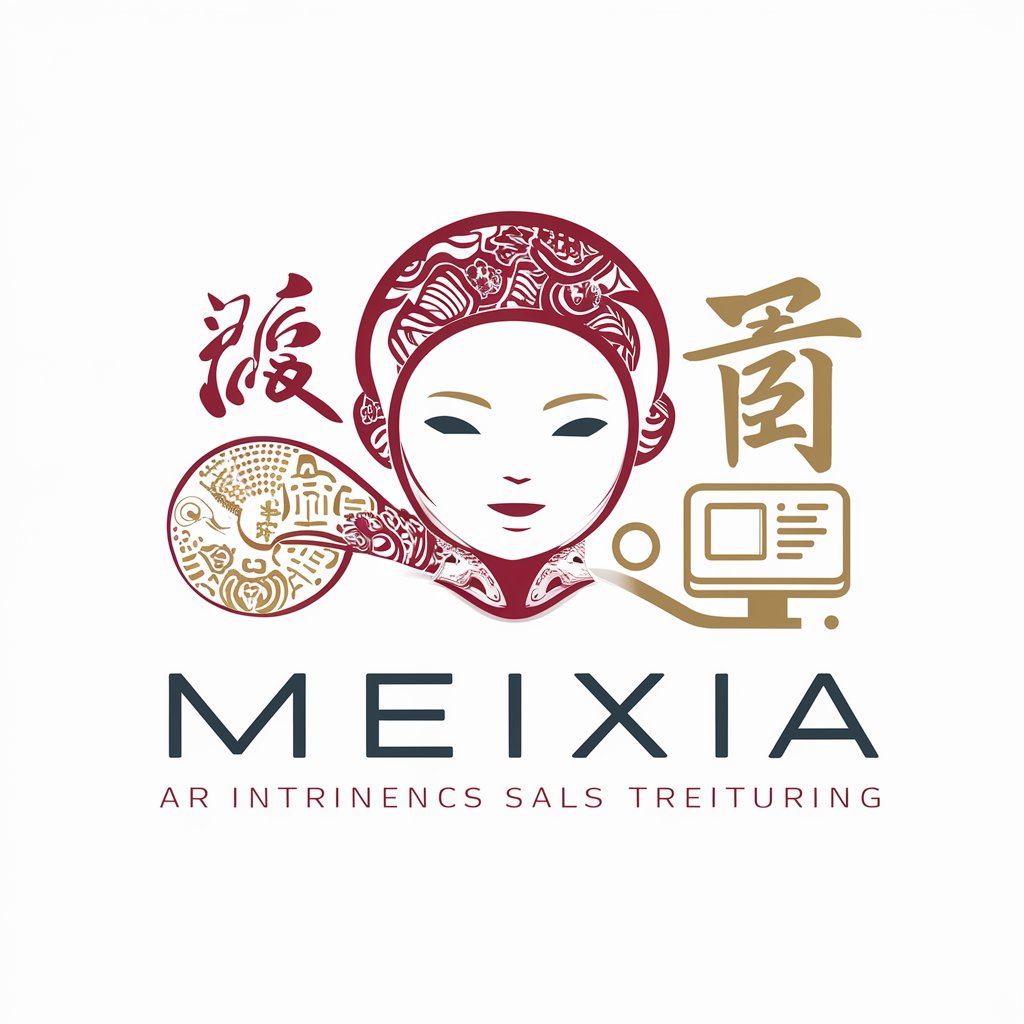
詐欺検知器
Empowering safety with AI-driven scam analysis.

SD-Arcane Secretary
Empowering creativity and efficiency with AI.

キューティ(QT)の分かち合い - キリスト教会の聖書牧会 (Bible)
AI-Powered Scripture Meditation

Rimoco (ACT.app AI support)
Optimize farming with AI-driven insights.

YiMi-GPT
Empowering Your Wellness Journey with AI

一步一步做游戏
Empower Your Game Development Journey with AI

退一步提问
Delve Deeper with AI-Powered Inquiry
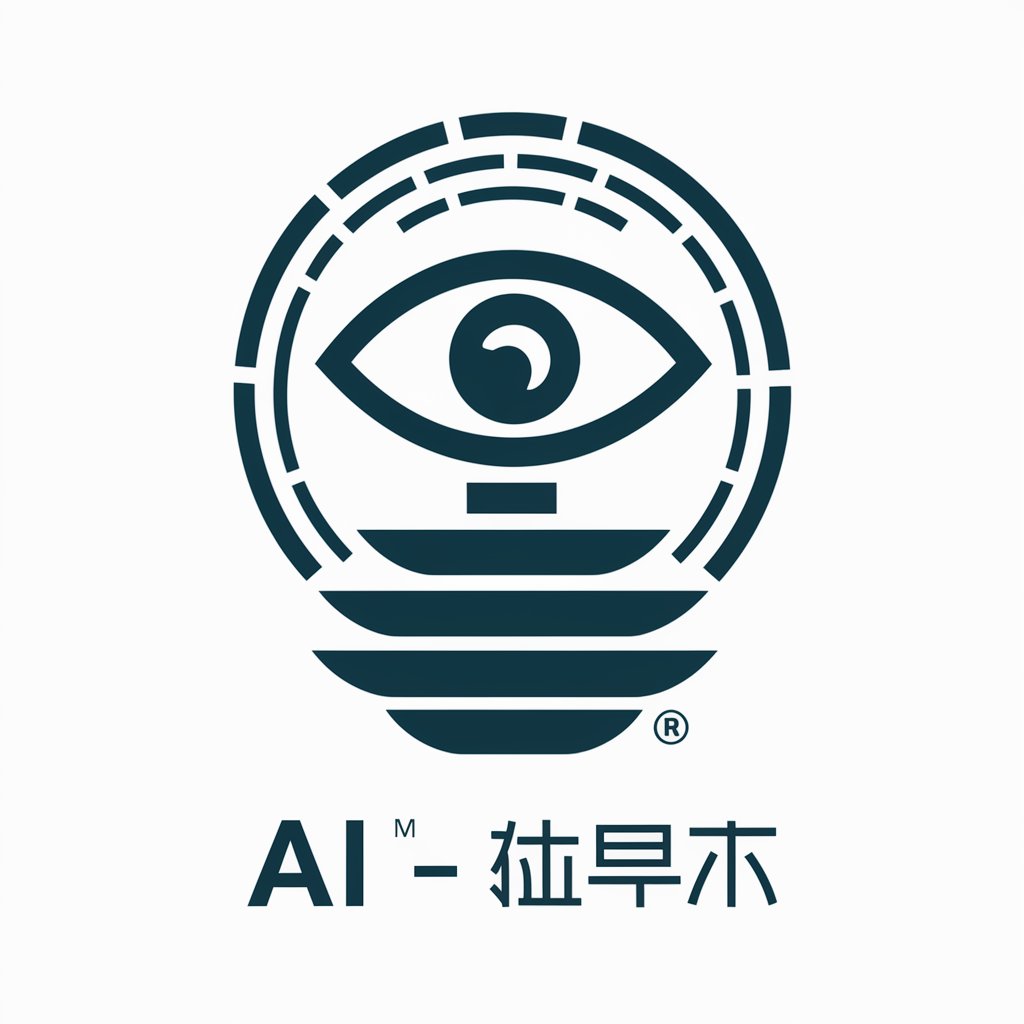
从零起步新手学Photoshop照片处理
Empower Your Creativity with AI-driven Photo Editing

Frequently Asked Questions About 楞伽印心
What is 楞伽印心 best used for?
楞伽印心 is optimized for providing deep insights and explanations on Buddhist philosophy, scriptural interpretation, and practical guidance on spiritual practices.
Can 楞伽印心 assist with academic research in Buddhist studies?
Yes, it is designed to support academic research by offering detailed explanations, sourcing scripture, and interpreting complex concepts in Buddhism.
How does 楞伽印心 differ from other AI chatbots?
楞伽印心 specializes in Buddhist teachings and practices, making it uniquely capable of handling questions related to Buddhism with depth and accuracy not found in generalist AI models.
Is 楞伽印心 accessible for those new to Buddhism?
Absolutely. It is tailored to guide users at all levels of understanding, from beginners to advanced practitioners, by providing clear and understandable responses.
Can I rely on 楞伽印心 for personal spiritual advice?
While 楞伽印心 can offer insights based on Buddhist teachings, personal spiritual advice should also involve consultation with experienced teachers or masters where possible.
